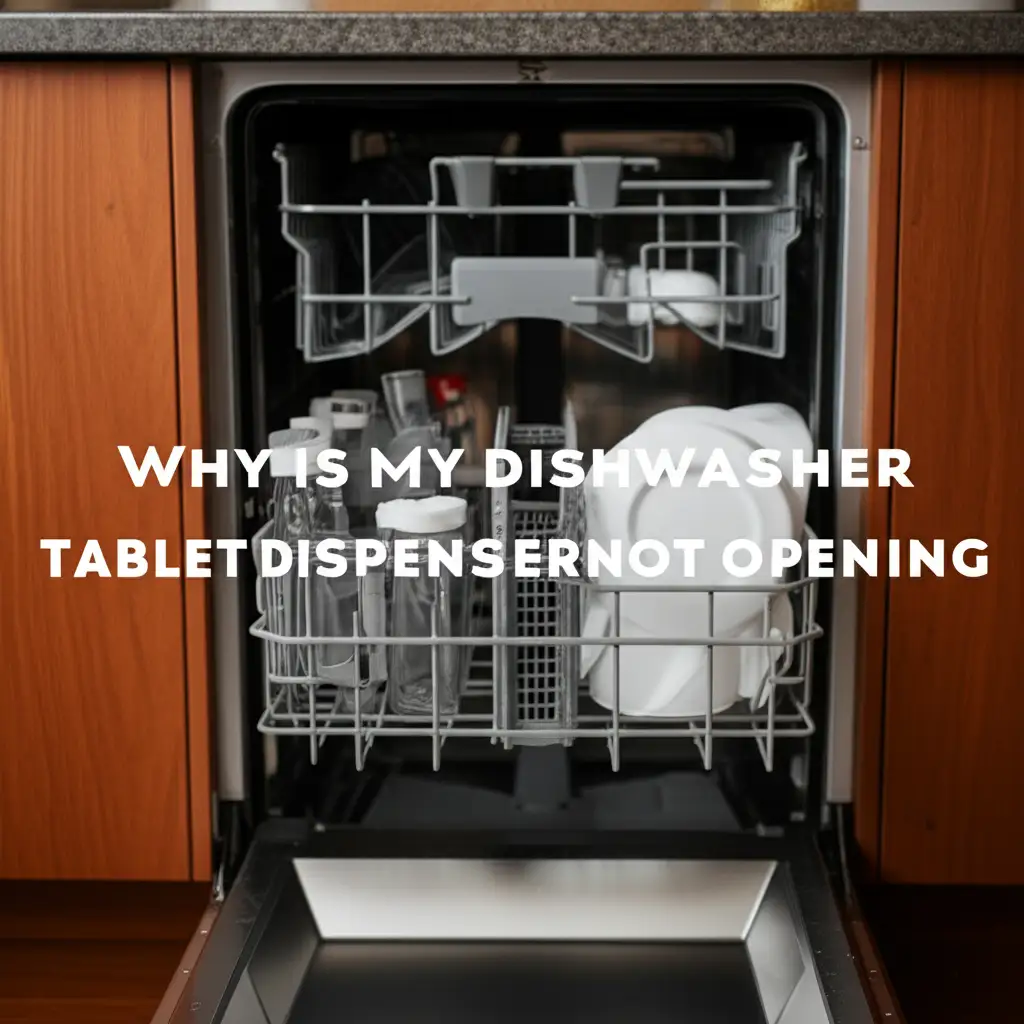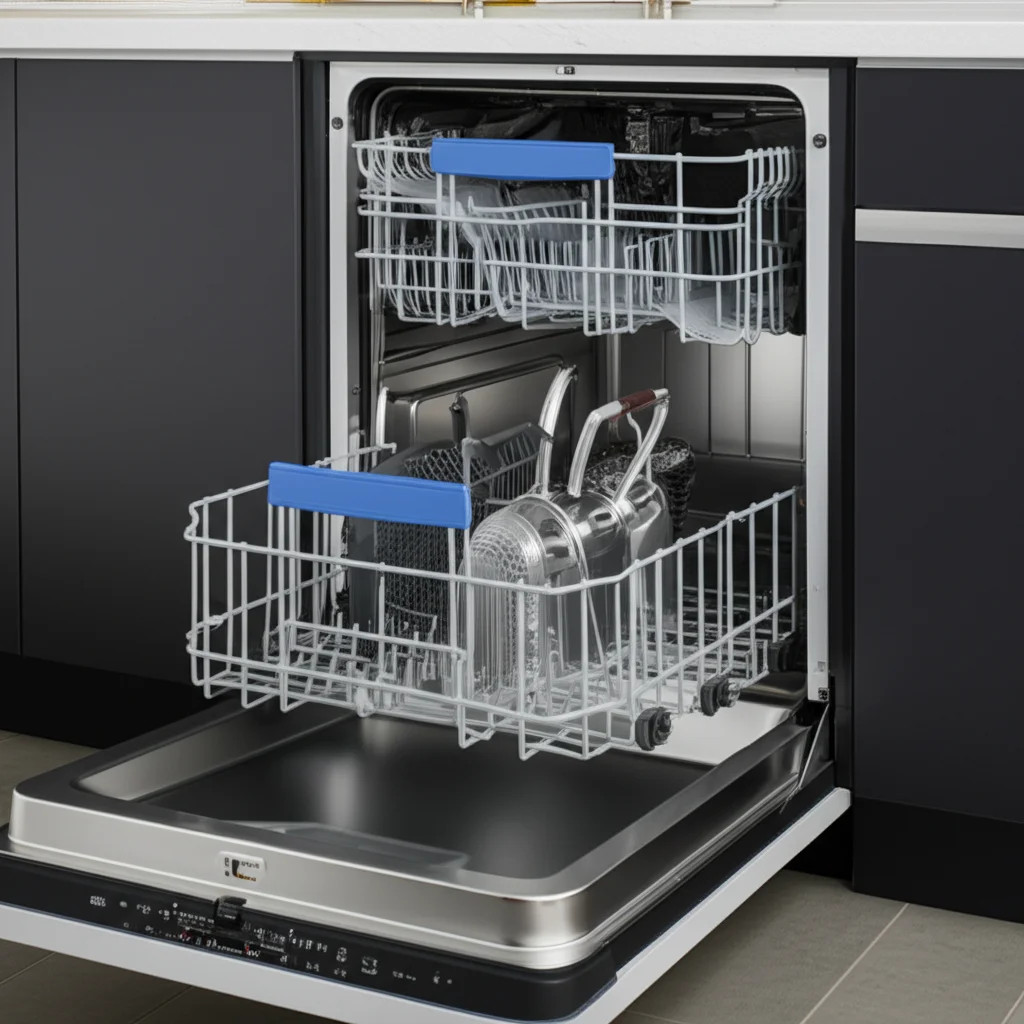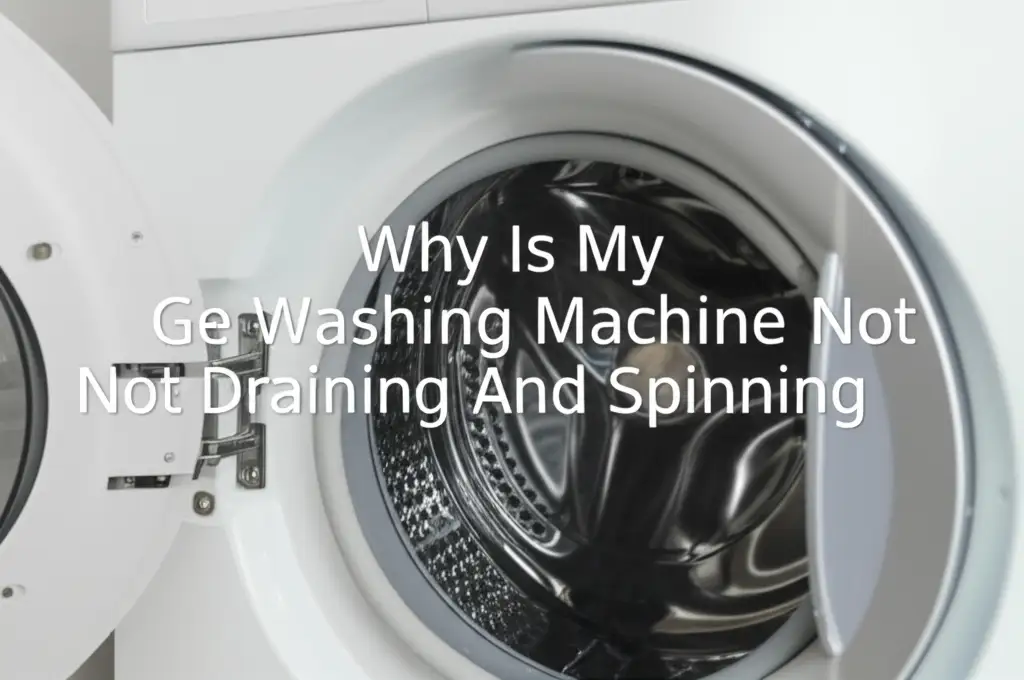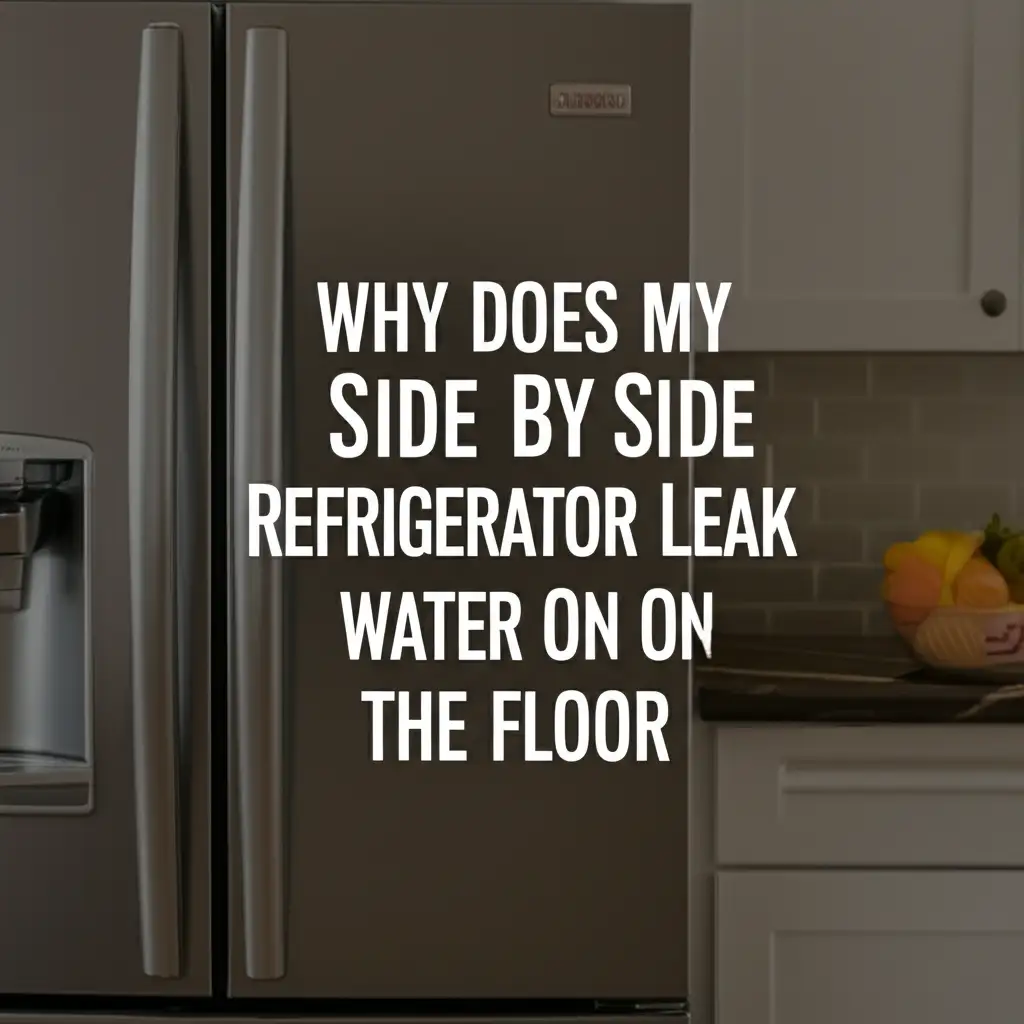· Katria Melrose · Appliance Repair · 17 min read
Why Is My Bosch Dishwasher Leaving Soap Residue
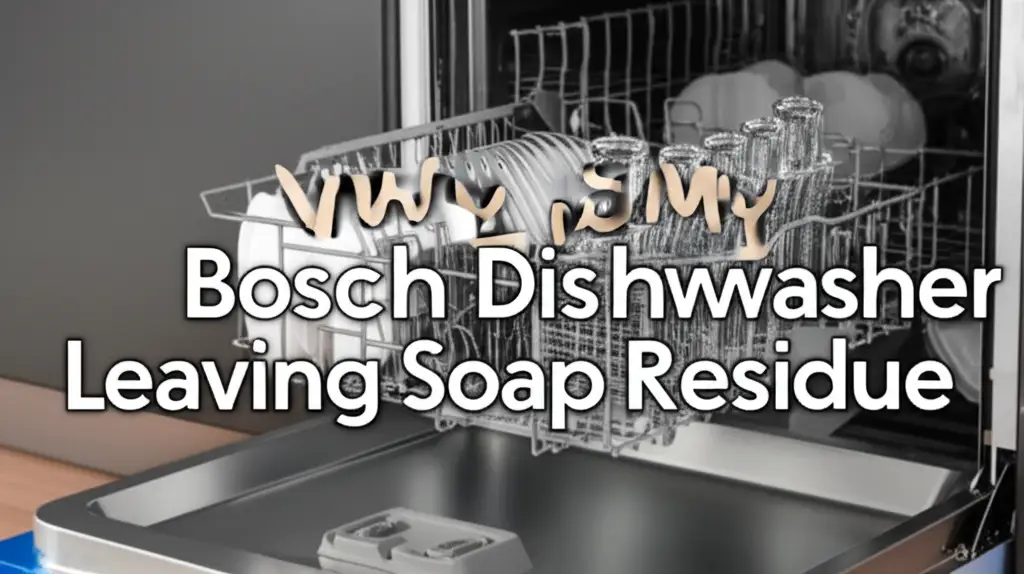
Why Your Bosch Dishwasher Leaves Soap Residue
It is frustrating when your Bosch dishwasher leaves soap residue on your dishes. You expect sparkling clean items, not a cloudy film or sticky spots. Many people face this common issue. A Bosch dishwasher is a quality appliance, but even the best machines can have problems.
Understanding the cause helps you find a solution. We will explore the common reasons your Bosch dishwasher leaves soap residue. We cover topics from how you load dishes to the type of detergent you use. We also discuss water quality and machine maintenance. By the end, you will have clear steps to get your dishes truly clean.
Takeaway
To stop your Bosch dishwasher leaving soap residue:
- Load dishes correctly, avoiding overcrowding.
- Use the right amount and type of dishwasher detergent.
- Check your water hardness and consider using rinse aid.
- Regularly clean your dishwasher’s filters and spray arms.
- Ensure proper water temperature and drainage.
Clear Answer to Your Soap Residue Problem
Your Bosch dishwasher leaves soap residue due to several factors. These often include improper dish loading, using too much or the wrong type of detergent, hard water issues, or clogged internal components like filters and spray arms. Addressing these common culprits usually resolves the problem.
Improper Dish Loading and Overcrowding Issues
One common reason your Bosch dishwasher leaves soap residue is how you load the dishes. Many people simply stack items in, thinking more is better. This approach actually prevents water and detergent from reaching all surfaces. Your dishes need space for a proper wash.
Overcrowding restricts water flow. Water cannot spray freely around the wash tub. This means some dishes do not get enough water to rinse off all the soap. It also means detergent may not dissolve completely. When detergent does not dissolve, it leaves a film.
- How to load properly:
- Place larger items like plates and serving dishes in the bottom rack. Face them toward the center spray arm.
- Put smaller items, bowls, and cups in the top rack. Angle them down so water drains out.
- Do not nest items together. Cups stacked inside each other will trap water and residue.
- Ensure taller items do not block the spray arms from spinning. Check that the spray arms can rotate freely before starting a cycle.
- Keep silverware in the designated basket. Do not overload the basket. Mix forks, spoons, and knives to prevent them from spooning or nesting together.
Proper loading ensures every item gets adequate exposure to water and detergent. This allows for a thorough wash and rinse cycle. A correctly loaded dishwasher works more efficiently. It will help prevent your Bosch dishwasher from leaving soap residue.
Detergent Selection and Dispensing Problems
The type and amount of detergent you use significantly impact how clean your dishes become. Using the wrong detergent or too much of it can definitely cause your Bosch dishwasher to leave soap residue. Dishwashers need specific detergents. Regular hand dish soap creates excessive suds and can damage your appliance. Many people ask, How much dish soap can I use in the dishwasher? The answer is none; you should only use detergent specifically designed for dishwashers. Using hand soap causes a huge suds problem. This leads to leftover soap residue on your dishes and inside the machine. If you want to know more about this, read Why Can’t You Use Dish Soap in the Dishwasher?.
Powder detergents can clump if exposed to moisture. This stops them from dissolving properly. Gel detergents sometimes do not rinse away as cleanly as pods or tablets. Pods and tablets are pre-measured, which helps prevent overuse. However, even with pods, using more than one can be too much for a normal load.
- Common detergent mistakes:
- Using too much detergent: More detergent does not mean cleaner dishes. It often means more residue. Start with the recommended amount. Adjust it only slightly based on load size and soil level.
- Using low-quality detergent: Cheaper detergents may not dissolve well. They might contain fillers that leave a film. Invest in a good quality detergent. Many users find premium detergents produce better results.
- Improper detergent storage: Store detergent in a cool, dry place. Humidity can cause powder or tabs to clump.
- Blocked dispenser: Check your detergent dispenser. It must open fully during the wash cycle. Food particles or a broken latch can prevent it from releasing the detergent at the right time. Ensure no dishes block the dispenser door.
Always use a high-quality, automatic dishwasher detergent. Read the product instructions carefully for the correct dosage. If you use a pre-measured pod or tablet, typically one is enough per wash. This careful approach helps avoid leftover soap on your dishes.
Hard Water and Mineral Buildup Issues
Water quality plays a significant role in dishwasher performance. Hard water is a common problem in many areas. It contains high levels of minerals like calcium and magnesium. These minerals do not dissolve well in water. They react with detergent and form a sticky film. This film is often what you see as soap residue on your dishes. It can also appear as a white, cloudy film.
Hard water makes it harder for detergent to work effectively. Detergent needs to bind with soils and lift them from surfaces. When hard water minerals are present, the detergent first binds with these minerals. This leaves less detergent available to clean your dishes. The result is poorly cleaned dishes with a visible film.
- Solutions for hard water:
- Use a rinse aid: Rinse aid lowers the surface tension of water. This allows water to sheet off dishes rather than bead up and dry. It helps prevent water spots and residue. Fill your dishwasher’s rinse aid dispenser regularly.
- Add a water softener: If you have very hard water, consider a whole-house water softener. This system removes minerals from your water supply. It benefits all your water-using appliances.
- Increase water temperature: Hot water dissolves detergent and minerals more effectively. Ensure your water heater is set to at least 120°F (49°C). Most Bosch dishwashers heat their own water if the incoming supply is not hot enough, but a good starting temperature helps efficiency. You can read more about this in Does Bosch Dishwasher Heat Its Own Water?.
- Dishwasher cleaning with citric acid or vinegar: Periodically run an empty cycle with a cup of white vinegar or a packet of dishwasher cleaner containing citric acid. This helps break down mineral buildup inside the dishwasher. This process also cleans the interior, which improves performance.
Addressing hard water helps your Bosch dishwasher rinse dishes more effectively. It minimizes the interaction between minerals and detergent. This leads to cleaner, residue-free dishes. If you see white residue, it is likely from hard water. Many people struggle with this, you can read Why Is There Residue On My Dishes After Dishwasher? for more information.
Clogged Filters and Spray Arms
Your Bosch dishwasher has filters and spray arms that need to be clean. These parts are crucial for proper washing and rinsing. If they become clogged, your dishes will not get clean. Food particles and mineral deposits can build up in these areas over time. This buildup is a very common cause of soap residue.
The filter system catches food debris. This stops debris from recirculating onto your dishes. If the filter is clogged, dirty water can sit in the bottom of the dishwasher. This water can redeposit residue onto your supposedly clean dishes. A clogged filter also restricts proper drainage.
Spray arms have small holes, or nozzles. Water sprays out of these nozzles at high pressure. This cleans the dishes. If these nozzles get clogged with food bits or mineral deposits, the water spray becomes weak or uneven. Some areas of your dishwasher might not get enough water. This means detergent will not rinse away completely from dishes in those areas.
How to check and clean filters:
- Locate the filter in the bottom of your Bosch dishwasher. It usually consists of a coarse filter and a microfilter.
- Twist or lift the filter assembly to remove it. Bosch models have easy-to-remove filters.
- Rinse the filters under warm running water. Use a soft brush or old toothbrush to scrub away any stuck-on food or grease.
- Ensure all debris is gone.
- Reinstall the filters correctly. Make sure they click into place.
How to clean spray arms:
- Gently remove the spray arms. They usually twist off or unclip.
- Inspect the small holes for blockages. Use a toothpick or a small wire to clear any clogged nozzles.
- Run water through the spray arms to flush out any internal debris.
- Reattach the spray arms securely. Ensure they can rotate freely.
Regular cleaning of these components is essential for optimal dishwasher performance. I recommend checking your filter every few weeks and cleaning it as needed. Clean the spray arms at least a few times a year. This simple maintenance step greatly reduces the chances of your Bosch dishwasher leaving soap residue.
Insufficient Water Temperature and Pressure
Water temperature plays a critical role in detergent activation and residue removal. Dishwasher detergents need hot water to dissolve properly and work effectively. If the water entering your Bosch dishwasher is not hot enough, the detergent may not break down completely. Undissolved detergent clings to dishes, creating soap residue.
Most Bosch dishwashers have internal heating elements. They can heat incoming water to the optimal temperature. However, if your home’s hot water supply is too cold to begin with, the dishwasher might struggle to reach the necessary temperature quickly. This can affect the wash and rinse cycles. For best results, ensure your water heater is set to provide water at around 120°F (49°C). Running your kitchen sink hot water for a minute before starting the dishwasher also helps. This brings hot water to the faucet and thus to the dishwasher quickly.
Water pressure is another factor. Your dishwasher needs adequate water pressure to spray water forcefully onto dishes. Low water pressure means the spray arms cannot distribute water effectively. This leads to poor rinsing and leaves soap residue. If you notice overall low water pressure in your home, consult a plumber. They can diagnose and fix any underlying plumbing issues.
- Troubleshooting temperature and pressure:
- Check water heater settings: Verify your water heater provides sufficiently hot water.
- Run kitchen faucet hot water: Before starting a cycle, run the hot water at your kitchen sink. This clears out any cold water in the pipes leading to the dishwasher.
- Avoid simultaneous hot water use: Do not run a hot shower or washing machine while the dishwasher operates. This can divert hot water and reduce pressure to the dishwasher.
- Inspect water inlet valve: The water inlet valve controls water flow into the dishwasher. A faulty valve might not allow enough water to enter. This affects water pressure inside the machine. If you suspect this, professional repair might be needed.
Ensuring your Bosch dishwasher receives hot water at good pressure helps detergent activate fully. It also guarantees a thorough rinse. This reduces the likelihood of seeing any soap residue on your clean dishes.
Drainage System Blockages
A well-functioning drainage system is essential for any dishwasher. If your Bosch dishwasher leaves soap residue, a drainage problem could be the cause. After the wash and rinse cycles, your dishwasher drains away the dirty water. If this water does not drain completely, it can sit at the bottom of the tub. This standing water often contains leftover detergent and food particles. When the dishes dry, this dirty water and residue can redeposit onto them.
Several issues can cause drainage problems:
Clogged drain hose: The drain hose carries water from the dishwasher to your sink drain or garbage disposal. It can get clogged with food debris, grease, or mineral buildup. A kink in the hose can also restrict flow.
Clogged air gap: If your dishwasher has an air gap on your sink, it can become clogged. This device prevents dirty sink water from flowing back into the dishwasher. Debris can block it, preventing proper drainage.
Clogged garbage disposal: If your dishwasher drains into a garbage disposal, the disposal must be clear. If the disposal is full or clogged, water cannot drain properly from the dishwasher. Always run your garbage disposal before starting the dishwasher.
Malfunctioning drain pump: The drain pump pushes water out of the dishwasher. If the pump is faulty or obstructed, it will not remove water effectively. This leads to water pooling inside the dishwasher. Sometimes, you might notice your Bosch dishwasher has water in the bottom. This is a strong indicator of a drainage issue.
Steps to check drainage:
- Inspect drain hose: Look under your sink. Check for kinks or bends in the drain hose. Ensure it has a high loop to prevent backflow.
- Clear air gap: If you have an air gap, remove its cap. Check for blockages and clear any debris.
- Run garbage disposal: Make sure your garbage disposal is empty and clear before running the dishwasher. Run it for a few seconds with water to clear it.
- Listen for drain pump: During the drain cycle, listen for the sound of the pump. If you hear unusual noises or no sound, the pump might be failing.
Ensuring proper drainage means all the dirty water, along with dissolved detergent, is completely removed from the dishwasher. This prevents it from settling back onto your dishes. Fixing a drainage issue is key to getting streak-free, clean dishes from your Bosch dishwasher.
Regular Maintenance and Cleaning Routines
Even a high-quality Bosch dishwasher needs regular maintenance to perform its best. Neglecting routine cleaning allows soap residue and mineral deposits to build up inside the machine. This buildup affects efficiency and can lead to the very problem you are trying to solve: soap residue on your dishes.
Think of your dishwasher as an appliance that cleans. It also needs to be cleaned itself. Food particles, grease, and hard water minerals can accumulate on the interior walls, spray arms, and filter. This creates an environment where residue thrives. If your dishwasher smells bad, it is a sign it needs cleaning.
- Essential cleaning steps:
- Empty wash cycle with dishwasher cleaner: Periodically, run an empty wash cycle using a specialized dishwasher cleaner. These cleaners break down grease, grime, and hard water deposits. Follow the product’s instructions.
- Vinegar wash: Alternatively, place a bowl of white vinegar (about 1-2 cups) on the bottom rack of an empty dishwasher. Run a hot water cycle. Vinegar is a natural descaler and helps remove mineral buildup.
- Baking soda treatment: For lingering odors and to boost cleaning, sprinkle a cup of baking soda on the bottom of the dishwasher. Let it sit overnight, then run a short hot cycle in the morning.
- Clean the door seal: The rubber gasket around the door can trap grime and mold. Wipe it down regularly with a damp cloth and mild detergent. This prevents odors and ensures a proper seal.
- Wipe down interior: After each wash, wipe down the interior door and edges. This removes any visible food splatter or residue.
Establishing a consistent maintenance schedule keeps your Bosch dishwasher running smoothly. I recommend cleaning the filter weekly or bi-weekly, depending on usage. Perform a deeper clean with vinegar or a dishwasher cleaner monthly. Regular care helps prevent soap residue and extends the life of your appliance. A clean machine is a happy machine, and it will produce sparkling clean dishes.
Troubleshooting Bosch-Specific Features
Bosch dishwashers are known for their quiet operation and efficient design. They often include features that, if not used correctly, can contribute to residue issues. Understanding these specific features helps you optimize your dishwasher’s performance.
One key feature in many Bosch models is the EcoDry or Zeolith drying system. Unlike traditional dishwashers with heating elements, Bosch often uses ambient heat or a mineral-based drying process. While energy-efficient, this can sometimes leave dishes feeling slightly damp. If dishes remain damp, any tiny bit of leftover soap or hard water minerals can dry and become visible residue. Ensuring proper rinse aid levels is even more critical with these drying systems. Rinse aid helps water sheet off, promoting better drying and reducing spots.
Some Bosch dishwashers also feature AquaStop protection, which prevents leaks. While this does not directly cause residue, it points to Bosch’s focus on water management. If the system detects a leak or an issue, it might stop the cycle. This could leave a partially completed wash, resulting in dishes with undissolved detergent or unrinsed soap.
- Tips for Bosch-specific features:
- Rinse Aid Dispenser: Regularly check and refill your rinse aid dispenser. Bosch recommends using rinse aid for optimal drying and to combat hard water spots, which are often confused with soap residue. A full dispenser ensures it releases during the rinse cycle.
- Cycle Selection: Bosch dishwashers offer various wash cycles. The “Auto” cycle detects soil level and adjusts settings. For heavily soiled dishes or significant residue problems, try the “Heavy” or “Sanitize” cycle. These cycles use hotter water and longer wash times, which can improve cleaning and rinsing.
- Water Softener Setting (if applicable): Some high-end Bosch models have a built-in water softener. If your model has this, ensure it is set correctly for your local water hardness. Consult your owner’s manual for instructions on programming this feature.
- Salt Dispenser (for models with water softener): If your Bosch has a salt dispenser, use dishwasher salt designed for water softening. This is different from common table salt. Refill it as needed to maintain water softness and prevent mineral deposits.
Familiarize yourself with your specific Bosch dishwasher model’s manual. It provides detailed instructions on using its unique features. Proper use of these features, especially the rinse aid dispenser and cycle selection, can significantly reduce soap residue. This will ensure your Bosch dishwasher delivers the sparkling results you expect.
Frequently Asked Questions
Can I use less detergent to avoid soap residue?
Using less detergent might seem like a solution, but it can make things worse. Too little detergent means dishes are not cleaned properly, leaving food particles and some residue. Find the right balance. Start with the recommended amount. Adjust slightly if dishes are still dirty or have too much residue.
How often should I clean my Bosch dishwasher filter?
You should clean your Bosch dishwasher’s filter regularly. For heavy daily use, check it weekly. For lighter use, clean it every few weeks or at least once a month. This prevents food particles from recirculating and causing residue.
What is the difference between white film and sudsy residue?
White film often indicates hard water mineral deposits. It looks cloudy or chalky. Sudsy residue, on the other hand, means leftover detergent. It may appear as a sticky or bubbly film. Rinse aid helps with white film, while proper detergent use and rinsing prevent sudsy residue.
Does rinse aid help with soap residue?
Yes, rinse aid helps with many types of residue. It lowers water surface tension. This makes water sheet off dishes more effectively. It prevents water spots and streaks, which can be mistaken for soap residue. It also aids in drying, reducing conditions for residue to form.
Why is my Bosch dishwasher not drying dishes properly, contributing to residue?
Bosch dishwashers often use condensation drying, which is very energy efficient. If dishes remain wet, any minimal residue can become visible. Ensure you use rinse aid consistently. Also, open the door slightly after the cycle ends to allow moisture to escape and air dry the dishes more effectively.
Is a hot water supply essential for my Bosch dishwasher?
Yes, a hot water supply is very important. Hot water helps dishwasher detergent dissolve completely and activate properly. It also helps in washing away grease and food particles more effectively. Although Bosch dishwashers can heat water, starting with hot water saves energy and improves cleaning results.
Conclusion
Having a Bosch dishwasher leaving soap residue can be a bothersome problem. However, as we have discussed, several common issues often cause it. We covered improper loading, using the wrong detergent, and the impact of hard water. We also looked at clogged filters and spray arms. Furthermore, insufficient water temperature and drainage problems play a role. Finally, we emphasized the importance of regular maintenance.
Addressing these areas will help you achieve sparkling results. Start by checking your dish loading habits. Then, ensure you use the correct amount and type of dishwasher detergent. Do not forget to keep your dishwasher’s filters and spray arms clean. Consider using rinse aid, especially if you have hard water. By following these steps, you will quickly find a solution. Your Bosch dishwasher will once again deliver the clean, residue-free dishes you expect. Take action now and enjoy perfectly clean dishes every time.
- Bosch dishwasher
- soap residue
- dishwasher problems
- appliance troubleshooting
- clean dishes
- hard water
- dishwasher detergent


